Birdwatching
As a beginner, you need just two things: suitable binoculars and a good identification book. The good news: the binoculars don’t have to cost a fortune.
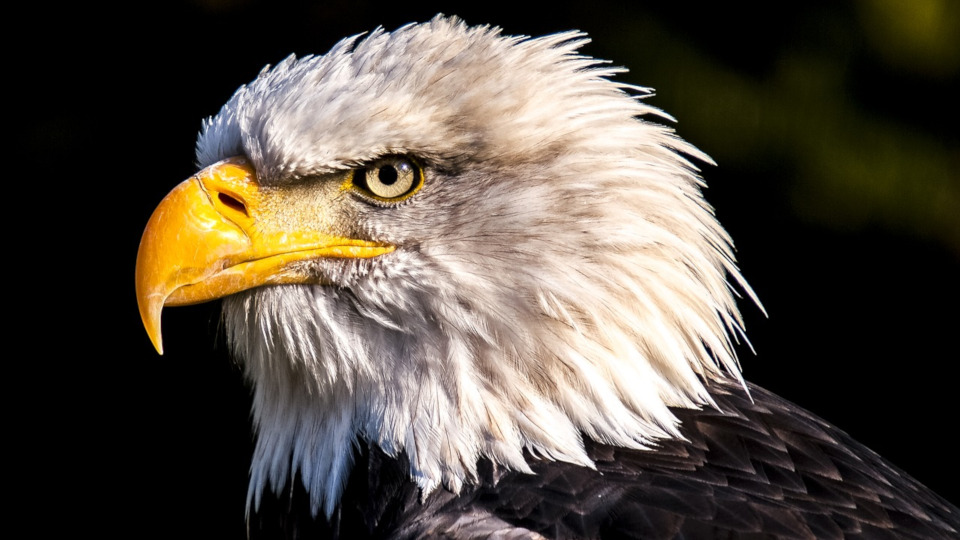
I would like to get to know the birds in my neighbourhood better. Which tools do I need as a beginner and which ones are not necessary?
As a newcomer to bird watching, you actually only need two things to get started: suitable binoculars and a good identification book. You don't have to spend a fortune if you're not sure if bird watching will become a long-term hobby. Decent binoculars offering satisfactory to good performance are available from around €70; sophisticated binoculars for more exacting requirements, which also ensure an enjoyable experience even for longer periods of observation, cost €200 or more.
Which binoculars should I buy?
This depends very much on how, where and when you will use your new optical device. Do you want to observe the birds in your garden and find out which species are living there, looking for food, or visiting your bird feeder in winter? If this is the case, general purpose binoculars with 8 or maximum 10 times magnification (e.g. 8x40 or 10x42) will be enough to get you started. These binoculars will collect more than enough light for daytime observations, and have a large enough field of view to allow you to track rapidly moving birds. If you want to observe at night or in twilight, you should consider buying binoculars that are particularly suited to night use (e.g. 7x50 or 8x56), which you can of course also use during the day.
What do the numbers on the binoculars mean?
You will usually find two numbers on any binoculars or spotting scope, for example 10x25 or 12x50. The first number is always the magnification, the second is the diameter of the lens in millimetres. Binoculars with a 40x62 specification magnify 40 times and the lens (the binoculars’ aperture) has a diameter of 62 millimetres. The magnification factor of 10 means that you see a bird from a distance of 25 metres as if it were just 2.5 metres away.
In smaller spaces (e.g. in a garden with trees and bushes), 8 times magnification is sufficient. In wide open spaces or on water, it is more appropriate to use 10 or 12 times magnification. But be careful: before you buy binoculars with 12 times magnification you should try them first, to be sure you can hold them steady.
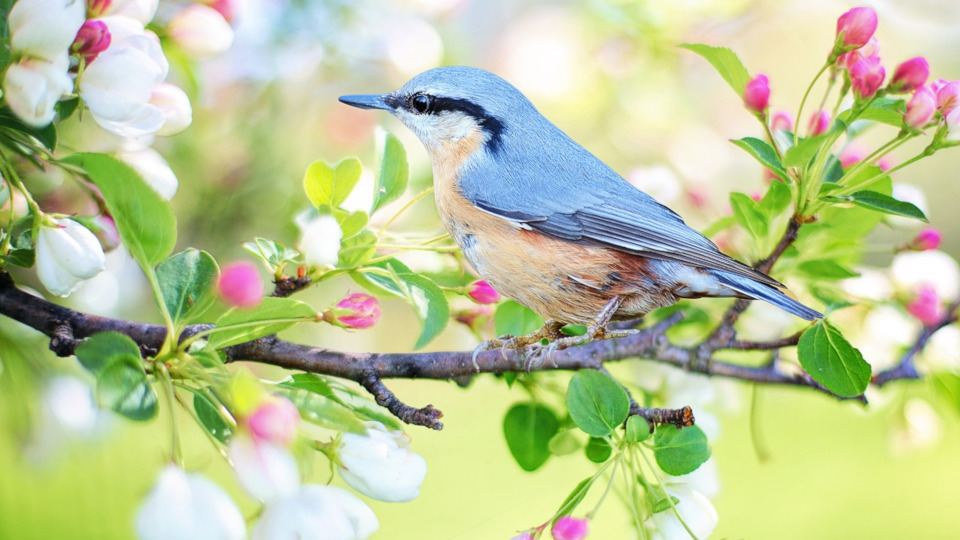
Which identification book will be useful to me?
There are many bird identification books, which are also known as field guides. Here too, where you want to observe is important. Do you prefer to observe in your local area, or should the field guide also cover future holiday destinations (e.g. Spain or Turkey)? There are good identification books that concentrate on the birds of Central Europe. If the book covers the whole of Europe (which includes the Middle East and North Africa in terms of animal geography), then bird species are included which are almost never seen in Central Europe and would potentially cause unnecessary confusion to a beginner.
On the other hand, birds are very mobile and sometimes appear in places where you least expect them, especially during migration seasons. The new Kosmos Vogelführer by Lars Svensson and other authors is highly recommended. You’ll find that most people who are serious about bird watching will have a copy of “the Svensson" in their pocket. It covers all the birds of Europe, the Middle East and North Africa. This is important because some bird species are very similar to one another. If only a few of them had been included in the book, you could never be sure if you had correctly identified the bird that was in front of you.
The Svensson book usually illustrates both sexes of a bird species as well as, where appropriate, the differing appearance of the juvenile bird or seasonal changes in the bird’s appearance. When you get started, don't let the huge variety of species confuse you. Small distribution maps show the regions in which a species is most likely to be found. By using these maps you can rule out many species from the outset. Anyone who believes that they have discovered a citril finch in a field in the lowlands of Central Europe should examine the possibility that it could instead be a yellowhammer, because that is much more likely.
Where can I best observe birds?
Basically everywhere. Even in the middle of built-up areas we can encounter an astonishing number of different species - if we only look and listen carefully. Many species of birds have managed to take advantage of the opportunities offered to them in the vicinity of humans. For example, black redstarts, originally birds of the high mountains, live on the roofs of our cities.
Blackbirds, great tits, blue tits, greenfinches, collared doves, swifts, and many others are city dwellers. As long as they have free access, kestrels nest in church towers and other tall buildings, and even the rare peregrine falcon can sometimes be found nesting in high-rise buildings or churches in the middle of the city - for example in Berlin or Augsburg. There they live comfortably feeding from the many easily accessible street pigeons; the hustle and bustle and the traffic noise far below him does not disturb them, and their offspring are quite undisturbed high above the hubbub of the city.
Which habitats should I visit?
There’s no general rule. Many bird watchers will develop their own preferences over time. It can be very worthwhile to regularly, perhaps even daily, visit a favourite observation spot which is practically on your own doorstep, and to see what has changed since the last time you there. Bird populations can change very quickly, especially during migration seasons. Since many birds, including many songbirds, are nocturnal animals, it is often the case that countless small birds can be found in a meadow landscape with hedges or trees in the morning, whereas in the afternoon there is little to see.
In an otherwise featureless field, pigeons can be found looking for grains of corn that may be scattered about, and besides the feral and wood pigeons you will also discover one or more stock doves. Migrating ruffs often rest on dry fields, and if you are very lucky you may even spot a dotterel or in winter a merlin, a small falcon that arrives after the tree sparrows and yellowhammers. These extremely mobile birds are always good for a surprise.
Why do I need a spotting scope?
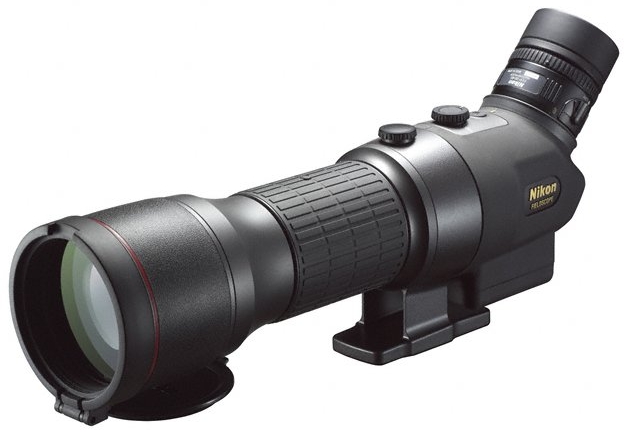
Spotting scopes are monocular telescopes with a magnification (depending on which eyepiece you use) of between around 20 and 80 times. They are always used for observing over longer distances or looking at birds across large open areas. The classic location to use one is at a large expanse of water. A spotting scope is ideal for observing slower moving objects, such as swimming ducks, geese, diving birds, seagulls, cormorants or other waterfowl. Due to their high magnification, the field of view is quite small.
However, the optics make it possible to see details that would be missed with binoculars: how big is the white spot on the outermost (tenth) primary feather of the gull swimming at a distance of 400 or 500m? Is this a yellow-legged gull, or is it a Caspian gull? Maybe it will lift a stretched leg out of the water while grooming itself and you can see if it’s pale yellow or an intense yellow colour. Is the head pure white in colour or do you see dark streaks on the neck? Modern optics with coated lenses allow you to solve such identification questions that would otherwise remain unresolved.
The biggest advantage of nature watching with a spotting scope is that you can keep your distance from the bird you are observing, without having to to disturb them. It would be irresponsible to try to observe rare birds of prey such as white-tailed eagles, golden eagles, peregrine falcons in their eyrie if you were only equipped with conventional binoculars. From a greater distance (> 1,000m) you won't disturb them and so you can still participate in the family life of these interesting big birds and observe their comings and goings at the nest in detail.
How much do I need to spend on a good spotting scope?
The same principle applies here as for any other sophisticated device: if you want a top-quality instrument, you should not be afraid to invest your money in a spotting scope from a high-end brand such as ZEISS or Swarovski. Such instruments will cost from €1,500 to well over €2,000, but they will last you a lifetime. Anyone who knows that they are likely to use their spotting scope outdoors in changeable weather conditions is well advised to not make false economies when buying.
For beginners who do not yet know whether bird watching is going to become a lifelong passion, it is sufficient to buy a medium-quality instrument that will provide excellent daytime results when the sun is shining, and good or satisfactory results under cloudy skies. Such spotting scopes can be found in the range of around €200 to €500.
As always when buying it is important to consider how, when, and how often you will use the scope. As a comparison, think of buying a car: the field sales representative who covers 100,000 kilometres a year, will invest far more in his vehicle than someone who only drives occasionally, and who may decide to buy a more reasonably-priced car that is still technically mature and reliable, but which would perhaps not be the model of choice for a long-distance driver.
What do I need to pay particular attention to when choosing a spotting scope?
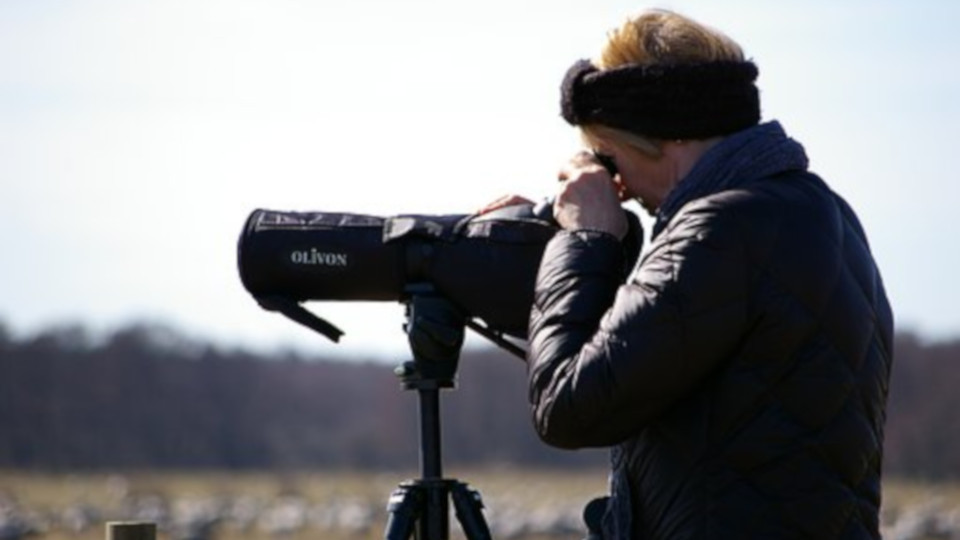
An important criterion when buying a spotting scope is its light gathering capability. The main indicator of how capable an instrument is is the lens diameter, i.e. the specification’s second number. If you're going to be out and about in changeable light conditions, you should opt for a spotting scope with a lens diameter of at least 80mm. The larger the lens, the more light will enter the scope.
However, the light gathering power also depends on the quality of the glass used and the coating, but above all on the magnification you choose. A higher magnification "costs" light, i.e. the image becomes darker when you select a higher magnification.
Can I only use my spotting object on water?
No. Larger expanses of water are the classic place to use one, because you are likely to find many passing waterfowl, especially during the migration season and in winter, and these also move relatively slowly. However, spotting scopes are also always useful if you cannot or do not want to get too close to the bird you are observing (e.g. because you want to protect it).
Searching for golden eagles or wall creepers on tall rock faces is simply more fun with a powerful spotting scope, and you’ll have more success than with simple binoculars.
It is always amazing how skilfully birds can hide in their habitat. The colourful wall creeper is no exception. Often you will only become aware of the bird, which continually searches for insects and spiders in nooks and cracks, when it suddenly and briefly spreads its wings, displaying the glowing red of its covert feathers. If you catch such a moment with binoculars, you can then relax and observe the bird for a longer period with the spotting scope as it searches for food. Wall creepers usually search rock faces systematically from the bottom to the top, then fly to another location at the base of the cliff and work their way up again, searching for food as they go. These birds, which look almost like large butterflies, like habitats close to flowing water.
Anyone who does not only want to identify and "tick off" birds, but would also like to observe them closely in open or semi-open habitats (agricultural land, grassland, or when observing from an elevated position), is better equipped with a spotting scope than with binoculars alone.
How do I find and identify forest birds?
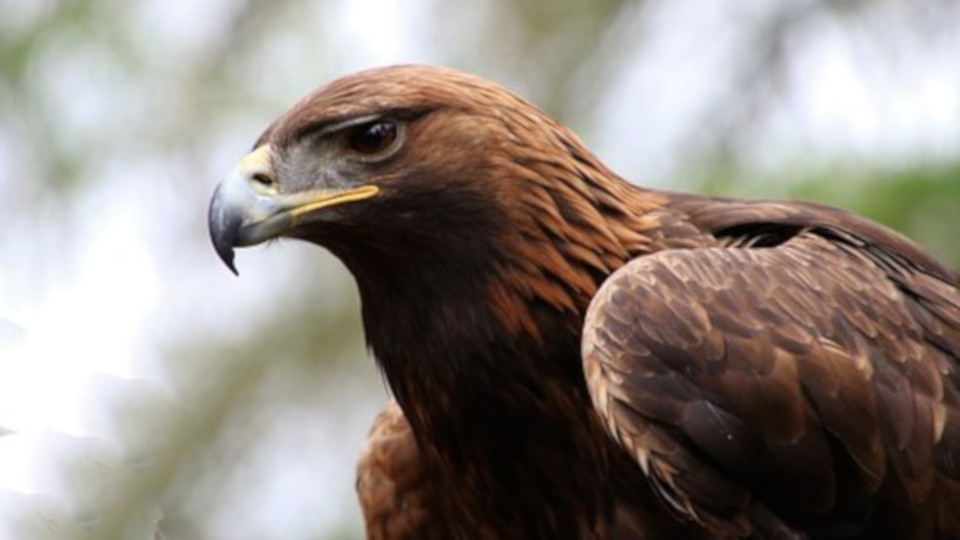
Anyone who wants to observe and identify forest birds has a problem in spring and summer: trees and shrubs are covered in leaves, and the observer will often only be able to see a few metres to the next “wall of greenery”. Birds are virtually everywhere, but they can be hard to see. So, if you can't see, you must listen. All birds have a very distinctive song that is characteristic of its species, which in most cases allows a positive identification. Try to identify the bird song. It is best to start with species that you already know well, such as a blackbird, great tit, or chaffinch. To start with, it helps to focus on an individual bird that you can see and whose song you can clearly make out. The loud, resounding song of the chaffinch is so memorable that you will very quickly be able to reliably recognise it. If you then slowly walk through the forest, on the basis of the singing chaffinches you can roughly estimate where one bird’s territory ends and its neighbours begins, and thereby also estimate the chaffinch population of that section of woodland.
Using the same method, you can now successively work out the other species too. This is relatively easy in spring, especially in the early morning hours, when most forest bird species sing continually.
You don't need to be especially musical to distinguish the songs. Many bird songs are clearly divided into stanzas, such as the loud, piping vocals of the song thrush, which usually also repeats the individual motifs many times. Others are simple and so catchy that you will immediately recognize the species acoustically having only heard it once before. One example is the chiffchaff, which in March, April and May almost continually sings its name ("chiffchaffchiffchaffchiffchaff...." often interrupted by individual "trrt" sounds). It is not always as easy as in the last example to convert birdsong into letters on a page. Therefore, it is best to get used to describing the tonality, volume and the character of the sound in your own words. Bird songs can be melodic, soft, sonorous, energetic, shrill, demanding or harsh. They can be divided into stanzas, descending, ascending, simple or very complex. Before the beginning of the actual song, some forest birds start with a quieter pre-song, which can only be heard from close quarters (warblers, for example, do this).
As your knowledge of birdsong slowly grows, you’ll then find it easier to concentrate on the still unknown bird sounds and systematically identify them too.
Do birds sing all the time?
No, only during periods of courting and mating, usually in spring and early summer. Only then do they claim their own territory, which they defend from their peers through their song. Some species also sing on sunny autumn days, but this is usually more quiet and restrained. City birds (blackbirds, great tits, blue tits and others) can even be heard on sunny winter days.
The sounds that we hear during the rest of the year are known as calls. They are not tied to the breeding season and can perform quite different functions (e.g. to warn, make contact or beseech). Bird calls should also be learned. They can sound completely different to their song. Anyone who hears the quiet "zipp!" of the nocturnal song thrush for the first time would not expect that it belongs to the same bird whose loud, piping song can be heard from the top of a tree in spring.
Why do many bird watchers use binoculars in addition to a spotting scope? Isn't one device enough?
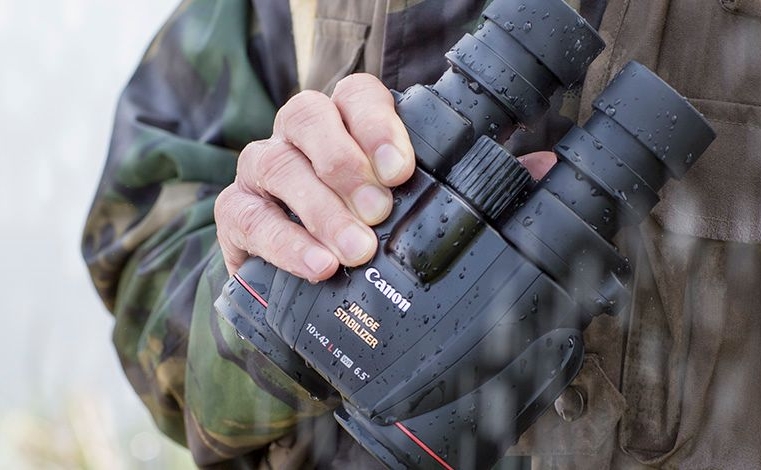
No, a spotting scope’s purpose is quite different to that of binoculars. Serious observers are therefore often to be seen with both. Binoculars, with their relatively large field of view, are suitable for scanning the sky or, for example, inspecting a forest edge or a stretch of water to first see if there are any interesting birds there. They are therefore used for orientation. If the distances are small or you are in a closed landscape such as a forest or scrubland, binoculars are often all you need.
However, if you discover an interesting object to observe, especially in an open landscape, it can be very worthwhile to take a closer look at it with a highly magnifying spotting scope, to examine it in more detail.
Of course, you can also use spotting scopes to track birds on the move. However, this requires some practice due to the smaller field of view. It is not so easy to keep a fast-moving bird in view when tracking it with a spotting scope. However, the more often you practice, the better you will become at finding a bird in the sky or tracking a flying bird, and as you become more familiar with handling the instrument it will become second nature. It’s a little like driving a car: the beginner glances down at the gear lever when changing gear to find the correct gear, the more experienced driver does it automatically.
What interesting habitats can I visit, apart from rivers and forests?
Any habitat is potentially interesting – sometimes even dull agricultural land. Birds are extremely mobile and many species do not necessarily dislike barren agricultural wasteland, but rather they appreciate their open spaces and the lack of disturbances (apart from at the weekend, when there are also plenty of walkers out and about). Skylarks, rooks, crows, wood pigeons, stock doves, turtle doves, pigeons, lapwings, starlings, wheatears, whinchats, are just a few of the bird species that you can observe in the fields at certain times of the year.
In general, however, the following principle applies: the less intensively a piece of land is used, the less human intervention, the more interesting it will probably be as a habitat for birds. This of course does not apply to measures to create and maintain a biotope, which are carried out specifically for the purpose of making habitats more attractive for birds and other animal and plant life.
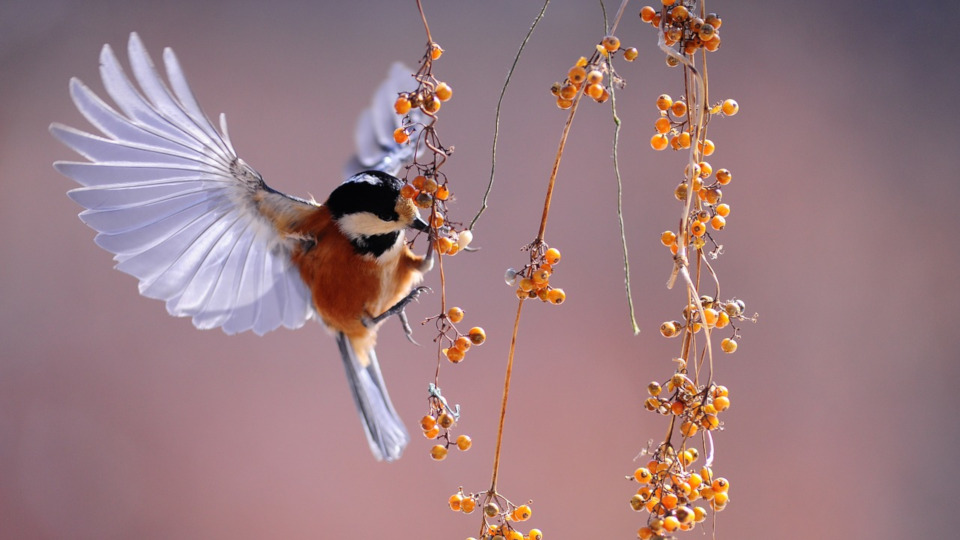
Therefore, even in an open arable landscape, watch out for wild areas such as hedges, single trees, unpaved paths, unused tracts of land with ruderal vegetation (thistles, wild flowers, grasses, climbers, etc.) which may be mowed only once a year, material storage areas, small pits in the landscape, pools, streams with overgrown banks etc. Birds use such uncultivated places for food, cover, and for breeding.
The reed warbler, who will attract your attention from the end of April to the summer through his rhythmic singing, often only requires a one to two metre wide section of reeds to build its nest. Ground-nesting birds such as yellowhammers (and reed buntings too in moist places) will build their nests on banks and road verges, if they are halfway natural and largely undisturbed. Every structure that stands out from the otherwise intensively used so-called normal landscape is worth a second look.
Stay a while near such places, keeping a little distance away, and watch what happens. Small birds, which may have initially hidden themselves away, often dare to leave their cover again if they realize that you don’t pose any immediate danger. The tree sparrow broods in an old nesting box that someone has attached to a tree. In an old haystack, a pied wagtail flies in and out, probably having laid its nest in some niche or crevice. A red-backed shrike appears on a thorn bush; he has made his nest there and is watching for larger insects or mice. Patience pays off here, and a decent optical device will help you be a witness to the fascinating natural world that’s on your doorstep.
